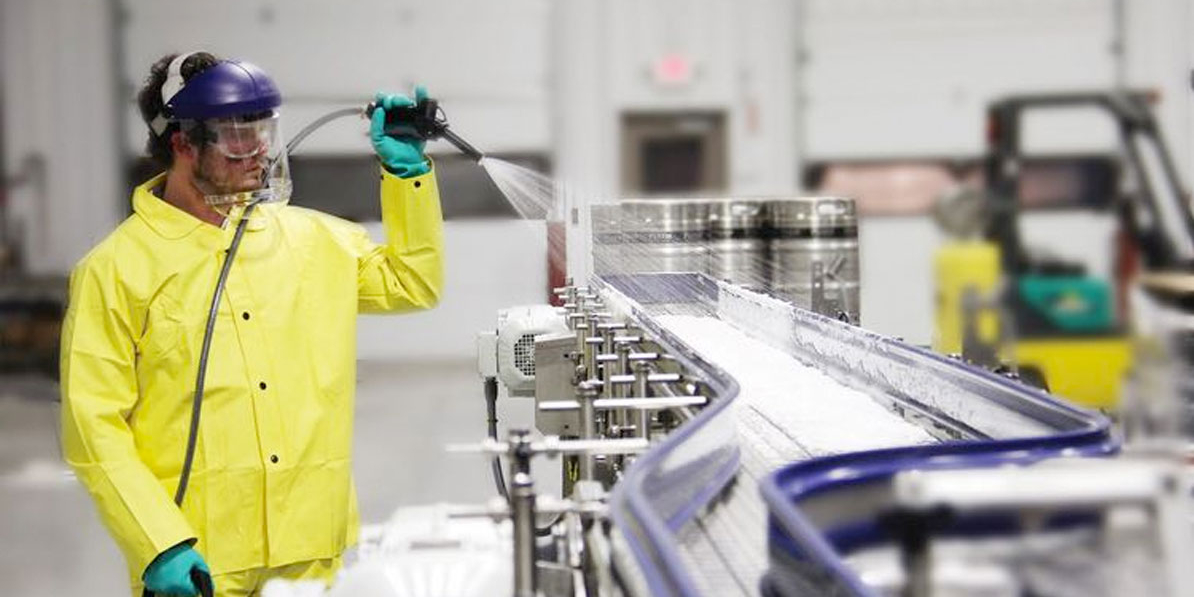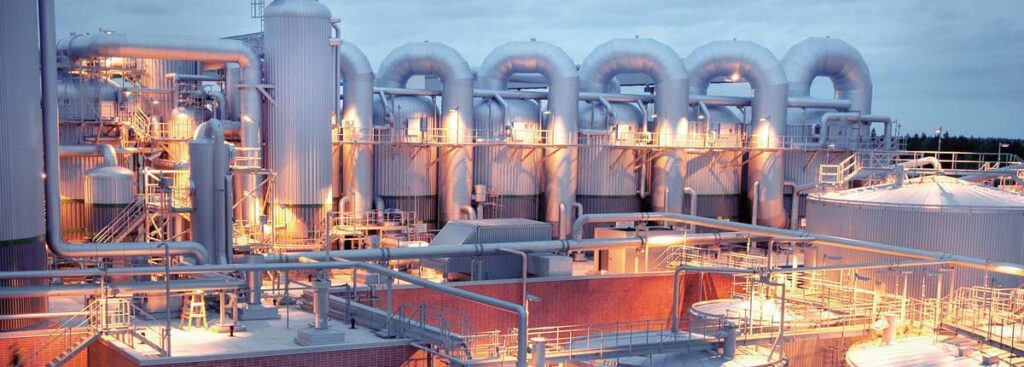
What is a chemical hygiene plan?
A Chemical Hygiene Plan (CHP) is a written document required by the Occupational Safety and Health Administration (OSHA). It outlines specific safety procedures that workers must follow while working with hazardous chemicals, in order to minimize risk of exposure to potentially dangerous substances.
The CHP covers topics such as personal protective equipment, engineering controls, safe work practices, health and hygiene, medical surveillance, chemical labeling and storage, spill response plans, hazardous waste disposal and more. It is important to have a comprehensive and up-to-date CHP in place as it ensures that workers are aware of the hazards associated with their job duties and how to protect themselves against them.
What are the objectives of a chemical hygiene plan?
A Chemical Hygiene Plan (CHP) is an organized and comprehensive plan designed to protect laboratory workers from the potential health hazards posed by hazardous chemicals in the work environment. It outlines safety protocols for working with hazardous materials, identifies any special procedures or precautions that need to be taken when dealing with them, and provides guidance on how to safely handle common laboratory operations such as waste disposal and emergency response.
A CHP establishes the safety procedures that must be followed in order to ensure that laboratory personnel are adequately protected from hazardous chemical exposure, while also ensuring compliance with relevant laws and regulations.
The main objectives of a CHP include minimizing employee exposure to hazardous chemicals, reducing the potential for accidental spills or exposures, identifying appropriate personal protective equipment (PPE) for each type of operation, and providing training for personnel on the appropriate use of hazardous materials.
What should a chemical hygiene plan include?
A CHP should include a written policy outlining the responsibilities of personnel, recommendation on protective clothing and equipment, training requirements for workers, methods for labeling and storing chemicals, emergency procedures in case of spills or other incidents, and equipment maintenance protocols.
In addition, the CHP should document any hazardous chemical exposures that have occurred. By following these guidelines, workplaces can ensure that personnel are adequately protected from exposure to hazardous substances and minimize the risk of injury or illness due to chemical use.
What does a chemical hygiene officer do?
A Chemical Hygiene Officer (CHO) is an important role in any organization that works with hazardous chemicals. Their primary responsibility is to ensure the safety of personnel and protect the environment by designing and implementing chemical safety programs, policies, standards, and procedures.
The chemical hygiene officers also oversee compliance with all applicable laws related to health and safety in the workplace. They are responsible for monitoring chemical use, storage, and disposal; performing safety audits; conducting safety training; and providing expert advice on safe chemical handling practices.
In addition to these core duties, the CHO may coordinate with other departments such as Human Resources and Environmental Health & Safety in order to ensure compliance across the organization and present health and safety requirements.

What is the OSHA chemical safety plan?
The OSHA Chemical Safety Plan is a set of steps that employers must take to ensure the safety and health of their workers, as well as the workplace itself, when handling hazardous chemicals. It outlines the preventive measures that employers should implement in order to protect employees from exposure to hazardous materials.
This plan includes training for workers on proper handling and storage of chemicals; personal protective equipment (PPE); emergency response plans; and other safety measures. Proper implementation of the OSHA Chemical Safety Plan can help to reduce incidents and injuries caused by hazardous chemicals, as well as ensure a safe environment for all employees. The plan also serves to keep businesses compliant with federal regulations set forth by the Occupational Safety and Health Administration.
What is the OSHA laboratory standard for chemical exposure?
The Occupational Safety and Health Administration (OSHA) sets a standard for chemical exposure and protective laboratory practices in the workplace. This includes keeping employees safe from any kind of hazardous chemical, whether it be by inhalation, ingestion or skin contact. OSHA enforces this standard through its Hazard Communication Standard, which requires employers to provide workers with information about the chemicals they use, including proper storage, labeling and handling instructions.
The OSHA lab standard also sets limits on the amount of exposure an employee can have to certain chemicals, ensuring that workers remain safe from any potential harm. To make sure these standards are met, employers must provide adequate training and ensure that employees follow safety protocols when working with hazardous materials.
What are the 10 steps to chemical safety?
Chemical safety is an important part of any workplace environment. Knowing and understanding the 10 steps to chemical safety can help ensure that all employees are safe while handling hazardous materials.
-
The first step to chemical safety is to identify potential hazards by reviewing the Material Safety Data Sheet (MSDS). The MSDS includes detailed information about the properties of a given chemical, including its health hazards, protective measures, and emergency response information.
-
The second step is to use the right personal protective equipment (PPE) when working with hazardous materials. This may include safety glasses, respirators, gloves, lab coats, and other items that are necessary for safe handling of chemicals.
-
Thirdly, it’s important to keep all containers of chemicals labeled and sealed properly. Labels should include the name of the chemical, concentration, date prepared, and appropriate hazard warnings.
-
The fourth step is to practice good housekeeping in the lab or work area by keeping all areas clean and free from debris that might contaminate products. All spilled materials must be removed from the work area as soon as possible.
-
The fifth step is to make sure that all employees are trained on the proper handling of chemicals in their work area. This includes understanding how to use protective equipment and safety measures to reduce exposure.
-
The sixth step is to provide good ventilation in the lab or work area. Poor ventilation can increase exposure to hazardous materials, so it’s important to keep areas well-ventilated.
-
Seventhly, emergency equipment should be readily available in case of an incident. This includes items like fire extinguishers, eye wash stations, and spill kits to contain hazardous materials.
-
The eighth step is to create a culture of safety by ensuring that all employees are aware of the dangers associated with handling hazardous materials. All workers should understand the proper safety procedures, and regular training should be conducted to reinforce these procedures.
-
The ninth step is to monitor employee exposure levels by providing personal protective equipment and conducting periodic air quality tests. This will help ensure that all workers remain safe while working with hazardous materials.
-
Finally, the tenth step is to document all safety measures taken in a detailed hazard assessment report. This report should include a description of the potential hazard, control measures taken to limit exposure, and any additional safety precautions that were implemented.
By following these 10 steps to chemical safety, employers can ensure that their employees remain safe while handling hazardous materials in the workplace.

What are 4 hazardous chemicals?
Chemical safety is an important topic in any work environment, as exposure to hazardous chemicals can have serious effects on a person’s health and wellbeing. To protect workers and customers alike, it is essential that businesses identify the potential risks associated with their products or services, and take steps to minimize them. One way to do this is by identifying the four main classes of hazardous chemicals: corrosives, flammables, oxidizers, and toxic materials.
Corrosives are substances that can cause severe damage to the skin or eyes upon contact. These can include acids, alkalis, and other caustic materials. Flammables are extremely combustible liquids or gases that can ignite easily and burn rapidly under certain conditions. Oxidizers are substances that can cause rapid or spontaneous combustion when they come into contact with flammable materials. Finally, toxic materials are substances that can cause chronic or acute health problems if ingested, inhaled, or absorbed through the skin.
What are the five rules of chemical safety?
Chemical safety is a critical part of all standard operating procedures. It helps ensure the safety and health of personnel, as well as protects equipment and materials from potential hazards. There are five basic rules of chemical safety that must be followed in order to minimize risk and maintain a safe working environment.
- Read the labels and material safety data sheets (MSDSs) for any chemicals that you plan to use. Be sure to understand the hazards of each chemical as well as the proper disposal or storage requirements.
- Wear the appropriate protective clothing and equipment when working with dangerous chemicals. This includes gloves, goggles, and an apron or lab coat. Additionally, it is important to ensure that your work area is well-ventilated.
- Never mix chemicals, even if they are similar. This can lead to unpredictable and potentially hazardous reactions.
- Store chemicals properly in order to prevent spills or other accidents. Always follow the manufacturers’ instructions regarding recommended storage temperatures and containers.
- Always clean up any spills immediately and properly dispose of all chemicals after use. This includes cleaning any equipment or surfaces that may have been exposed to hazardous materials.
Adhering to these five basic rules of chemical safety can help ensure a safe working environment for everyone in your laboratory.
What is a common hazardous chemical in healthcare?
Healthcare workers are exposed to all kinds of hazardous substances. These can range from pesticides used in the garden, to chemical cleaners used in bathrooms and kitchens, to toxic drugs and medicines. One of the most common hazardous chemicals found in healthcare is formaldehyde.
Formaldehyde is a colorless, odorless gas that has many industrial uses such as preserving specimens for research laboratories and embalming. It can also be found in some furniture, carpets, cleaning supplies and even cosmetics.
In healthcare settings, formaldehyde is often used as a disinfectant to prevent the spread of infections. Exposure to high levels of formaldehyde can cause respiratory irritation, headaches and nausea. Healthcare workers must take extra precautions to protect themselves from exposure by wearing personal protective equipment such as respirators, eye protection and gloves.
Additionally, employers should use ventilation systems to reduce exposure levels in the workplace. By following these simple steps, healthcare workers can help protect themselves from dangerous chemical hazards and potentially hazardous chemicals.
Another hazardous chemical that is often found in healthcare is ethylene oxide. Ethylene oxide is a colorless gas with a sweet odor and bitter taste. It is used in healthcare as a sterilizing agent for medical equipment and supplies.
However, exposure to high levels of ethylene oxide can cause skin irritation, headaches and dizziness. Healthcare workers must take precautions to protect themselves from any potential health risks associated with this chemical by wearing protective clothing such as respirators, masks and gloves when handling ethylene oxide. Proper chemical hygiene training and a chemical hygiene plan are crucial for employee safety.
What are 5 top laboratory hazards?
Laboratories are places for experimentation and research, but they can also be dangerous. Understanding the potential hazards that exist in a laboratory is essential to ensure safety. The five top laboratory hazards include chemical exposure, fire, radiation, biological agents, and electrical shock.
Chemical exposure is a significant hazard in any laboratory situation due to the use of hazardous materials such as acids, solvents, and other hazardous compounds. It is important to wear the appropriate protective gear such as safety glasses, gloves, and an apron when working with chemicals to reduce potential exposure.
Fire can cause serious damage in any laboratory setting due to the presence of volatile materials. Laboratories should be equipped with fire extinguishers and personnel should be trained on how to use them. In addition, flammable materials should be stored in proper containers and away from direct sources of heat.
Radiation is a potential hazard in laboratories that use radioactive materials or radiation-generating devices such as X-ray machines. It is important for personnel using these devices to wear protective gear such as lead aprons and glasses, and follow safety protocols.
Biological agents can also be a hazard in certain laboratory settings. It is important to wear protective clothing when working with biological materials and to practice proper hygiene such as washing hands regularly and avoiding contact with eyes, nose, or mouth. Additionally, it’s important to dispose of infectious waste properly and use safe disposal methods for sharp objects such as needles.
What are the 10 lab safety rules?
It is important to understand the 10 lab safety rules in order to ensure a safe and productive laboratory environment. The 10 lab safety rules are:
- Wear proper protective gear – including clothing, eye protection, and gloves – whenever handling chemicals or working with equipment that generates heat, sparks, and open flames.
- Read labels carefully before using any chemical or equipment.
- Follow the instructions provided and adhere to safety protocols in the lab and laboratory safety manual.
- Keep chemicals away from sources of heat, ignition, and open flames.
- Know how to properly handle and dispose of hazardous materials according to safety protocol.
- Know the location of emergency exits, fire extinguishers, spill kits, eyewash stations, and first aid kits.
- Never work alone in the lab; always ensure that someone else is present in case of an emergency.
- Do not touch or taste any chemicals without permission from a qualified supervisor.
- Report any accidents or spills to your supervisor immediately.
- Clean up all equipment and materials after use and before leaving the laboratory with prior approval.
Adhering to these 10 lab safety rules is essential for ensuring a safe and productive workplace in any laboratory setting. Always be aware of the potential hazards and use caution when handling hazardous materials or working with dangerous equipment.
How often should a workplace or laboratory chemical inventory conducted?
It is important to conduct a workplace or laboratory chemical inventory at least once a year. This helps to ensure that all chemicals stored onsite are accounted for, and any expired or unwanted materials can be safely disposed of. Additionally, employers should update the list as soon as a new container of hazardous material is received.
Need PSM Help?
Need help with PSM applicability determinations or program development? We can help!
Questions?
Does this apply to your company? Do you have questions? Contact us!
Receive News to Your Inbox
We send our articles by email whenever we add a new one. Don’t miss out! Sign up for our blog today.
Request a Quote
iSi can provide assistance in this area. How can we help? Ask us for a price quote.